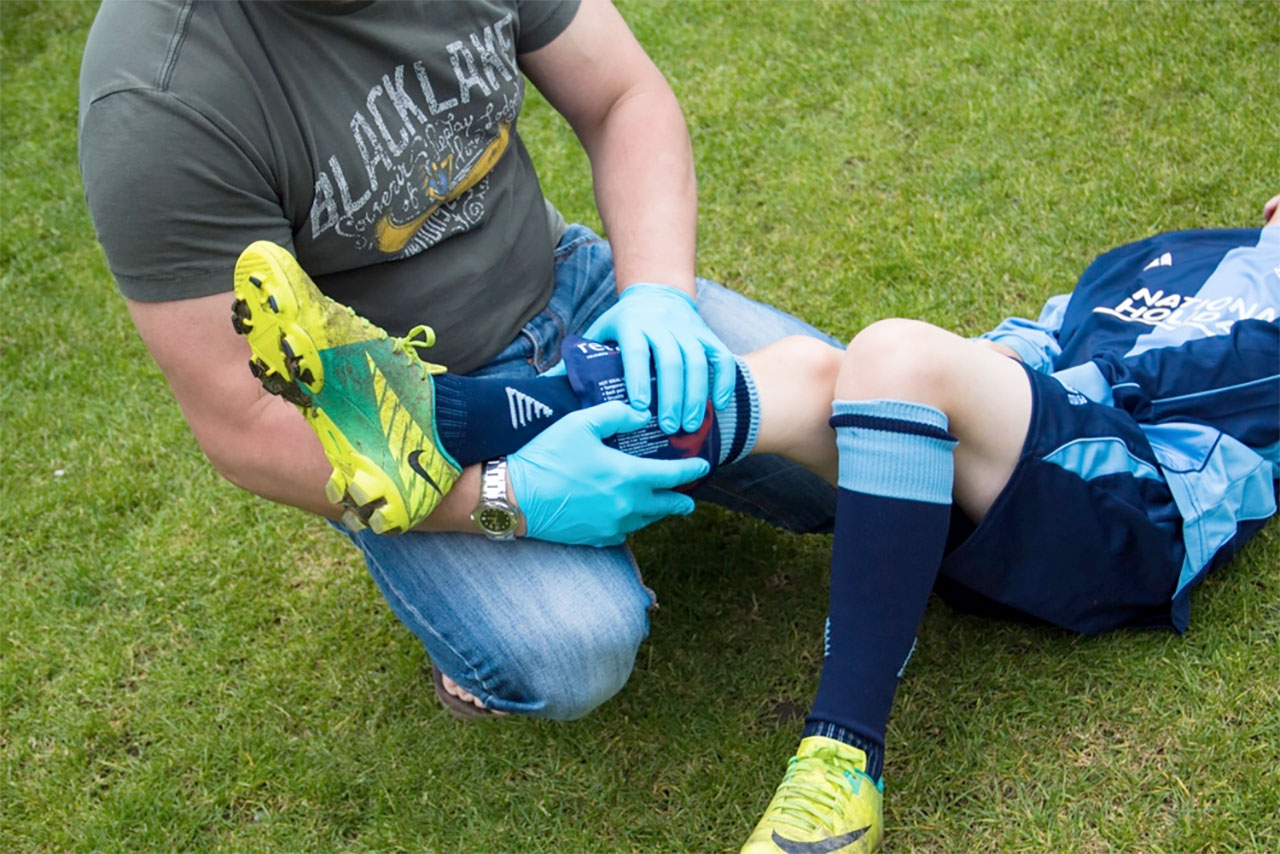The bones of the forearm, both the radius and the ulna, can be injured by the impact of a fall or heavy blow. The bones have little fleshy covering and the bone may pierce through the skin, exposing an open fracture. In the event of an open fracture the wound needs to be covered with a large sterile dressing to prevent further bleeding but care must be taken not to put pressure on any protruding bone.
Injury to the wrist
A fall on an outstretched hand may result in an injury known as Colles fracture. Treatment of a distal radial fracture involves placing the wrist and hand in a sports aid splint in a resting position and using an ice pack over the wrist to reduce any swelling. Recent research has indicated that early mobilisation of the wrist hastened recovery time.
The wrist joint can often be sprained and a physiotherapist may have difficulty differentiating between a fracture and a sprain, especially if the small scaphoid bone at the base of the thumb is injured. If there are doubts about the injury it should be treated as a fracture until the results of an X-ray are obtained.
Treatment of hand injuries
The hand is made up of eight carpal bones, five metacarpals and fourteen phalanges making a total of twenty seven bones. Crushing injuries can cause multiple fractures. There are many sports supports for hand injuries, Mueller wrist stabilisers and adjustable wrist braces. The function of sports supports for hand injuries is to elevate the hand and immobilise it reducing the pain felt by the injured person.





